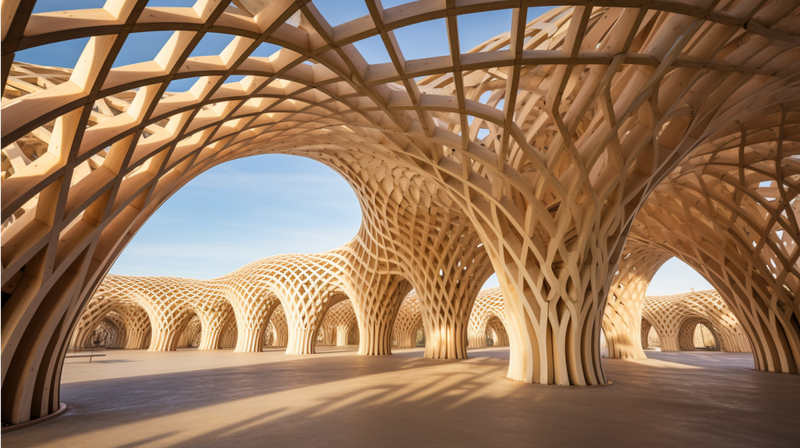Blending Old and New: How Smart Design Fits into Historic Buildings
In a time when technology constantly changes our built world, there's a challenging push and pull between keeping old, historic buildings alive and bringing in new, innovative designs. Architecture has seen a big shift with the rise of parametric design. This allows architects to play with settings, changing designs in flexible ways, and creating structures that are not only beautiful but also work very well. But how does this cutting-edge approach mix with the delicate threads of our architectural past?

Understanding Parametric Design
Parametric design, often seen as a key idea in modern architecture, uses computer programs (algorithms) and models to create designs that can easily adapt to different settings. It provides a strong framework where architects can adjust things like materials, sizes, and how spaces relate to each other. This helps them create designs that are both flexible and responsive to environmental, social, and structural needs.
Heritage Structures: Guardians of History
On the other hand, heritage structures are like living proof of our historical, cultural, and architectural stories. Preserving these buildings is extremely important for keeping a real connection to our past. They offer a way for future generations to explore and understand the histories and cultures that shaped civilizations. Preservation isn't just about protecting old bricks; it also includes keeping alive the stories, skills, and cultural symbols that have developed over time.

The Perfect Partnership: Tradition Meets Technology
Bringing together the seemingly different worlds of heritage preservation and parametric design allows tradition and technology to exist side-by-side. This creates a special partnership that makes our architectural landscape richer. So, how can we weave these threads together without unraveling the rich fabric of our historical architecture?
- Adaptive Reuse: Parametric design can help in the adaptive reuse of heritage structures, making sure they meet modern standards for function and sustainability. By using parametric algorithms, architects can explore countless ways to adapt designs, finding solutions that respect the original building's look and feel while making it suitable for modern use.
- Structural Enhancement: Using parametric design allows for optimizing structural changes. This ensures that any additions or reinforcements to heritage buildings don't harm their historical beauty or structural integrity. The flexibility of parametric models helps architects create solutions that blend smoothly with the existing parts of the structure.
- Sustainable Innovations: Adding sustainable technology into historical structures is vital today for the environment. Parametric design helps include eco-friendly elements (like optimized natural lighting, ventilation, and thermal performance) in a way that fits well with the original architecture.
- Digital Restoration: In cases where physically restoring a building isn't possible, digital reconstructions using parametric design can bring virtual life back to ruined structures. This not only preserves the visual and spatial experience of the heritage but also serves as a valuable tool for education and research.
- Cultural Preservation: Embedding parametric design into heritage structures ensures that while buildings might get modern features and technologies, their cultural, historical, and architectural values are preserved and celebrated. This creates an environment where buildings aren't just physical objects but living, evolving spaces that continue to hold cultural meaning.

Weaving the Past and Future
Blending tradition and technology by using parametric design in heritage structures shows a way forward where architecture can echo the past while gracefully moving towards the future. It calls for an era where pieces of history aren't forgotten in the pursuit of modernity. Instead, they are cared for and carried into the future, making sure the stories, arts, and cultures they hold are preserved, celebrated, and passed down through time.
In such a combination, we create a future where architectural efforts are not just proof of technological progress, but a mosaic where each piece tells a story, each shape tells a history, and each space becomes a sanctuary where the past and future come together in a timeless embrace.

